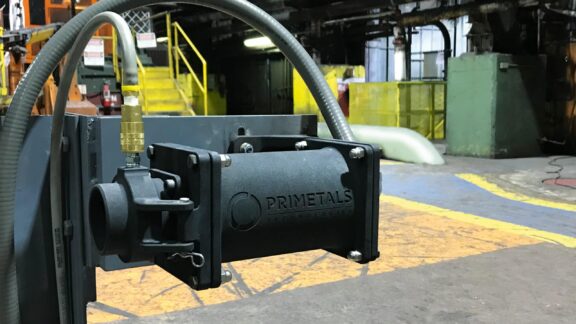This post is also available in: 简体中文 (Chinese (Simplified))
Design changes in the laying head and laying pipe, along with the use of proprietary materials, have resulted in revolutionary performance levels at higher finishing speeds and with better mill utilization. Experience at several high-speed rod mills has demonstrated dramatic improvements in pipe life and resulting production increases. An improved coil pattern, coupled with a new reform tub design, can provide high-quality coils consistently.
One of the most important aspects of product quality in a long rolling mill that produces bar or rod in coil form is the quality of the finished coil. High-quality coils have orderly rings within the coil and uniformity of the inner and outer diameters for tangle-free payoff in downstream user operations, plus compactness of the coil package for efficient storage and shipment. The ability to obtain high-quality coil starts with the design and control of the equipment upstream of the coil reforming station and continues through to the coil-handling system.
In a high-speed rod rolling mill, effective operation of the laying head, a controlled cooling conveyor and a coil reforming tub are critical to achieving successful operations at speeds over 100 m/s. The laying head must form rings accurately and consistently so that they can be cooled uniformly and form a good coil. Furthermore, a minimal degree of wear on the laying head pipe helps avoid downtime from frequent pipe changes, which lowers production. After proper cooling on the conveyor, the coil reform tub must transform the ring package from the conveyor into a well-ordered and dense coil, which can then be conveyed during further cooling, compacted and readied for shipment.
Recent design changes in the laying head and laying pipe, coupled with the use of proprietary materials, have resulted in revolutionary performance levels at higher finishing speeds and with better mill utilization. In addition, new designs of the reform tub system incorporate features for smooth coil handling over a range of coil sizes to enable dense coiling for all sizes and grades. From new mill installations to mill modernizations, the design innovations from the laying head through to the reform station can significantly improve rod mill productivity and product quality.
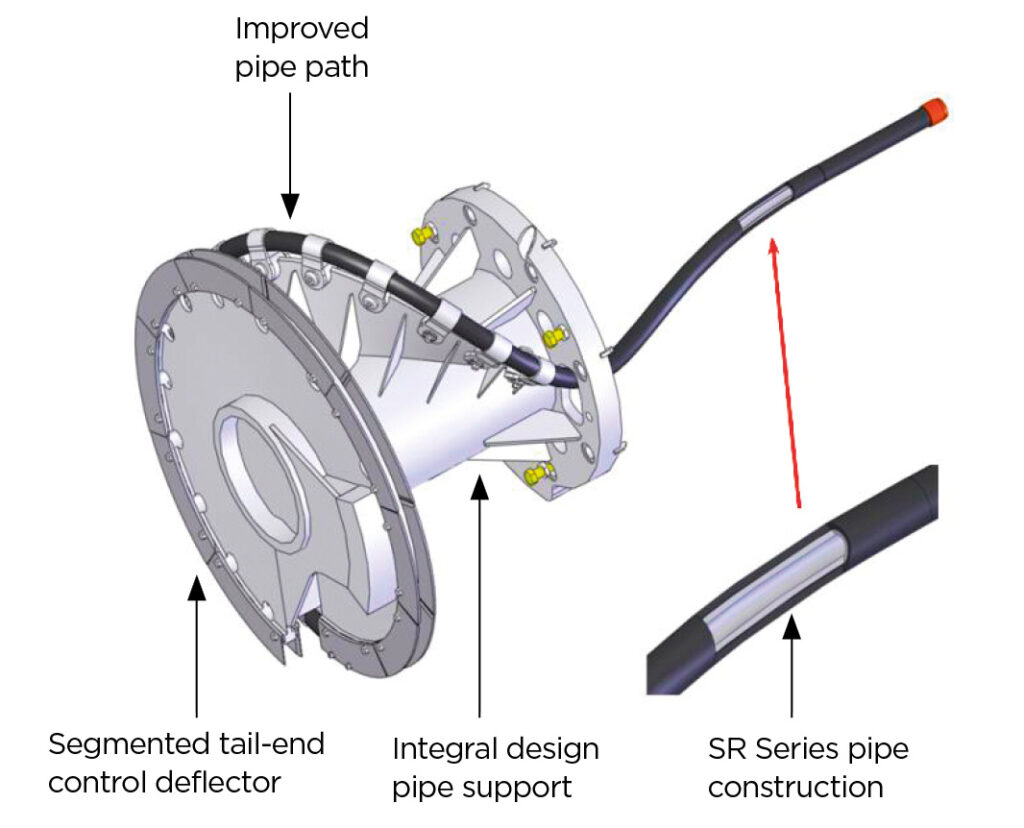

Challenges at the laying head
The pinch roll and laying head determine the consistency of ring diameter and placement on the cooling conveyor. This can be especially difficult on small-diameter products rolled at speeds over 100 m/s. Closed-loop control of pinch force and speed, plus rapid and repeatable roll-close times, can be provided by the Morgan Intelligent Pinch Roll. In the laying, a good coil package depends on an efficient pipe path and tail-end control, stable pipe support and bearing design, plus good speed control with front-end positioning and coordination with the pinch roll operation.
The most common laying head problems faced by rolling mill managers are head- and tail-end formation, packaging and pattern-related issues, as well as excessive pipe wear. Poor head and tail ends and inconsistent ring patterns often cause delays at the reform station. High rates of pipe wear result in frequent pipe changes.
To tackle these industry-wide problems, engineers at Primetals Technologies in Worcester, Massachusetts, U.S.A., spent several years developing new laying head technology. Their goal was a design that could produce a consistent ring pattern at high speeds with significantly increased pipe life. One initial test site was at Sterling Steel in Sterling, Illinois, U.S.A. Sterling Steel’s high-speed minimill – a mix of older and newer equipment – produced 450,000 t/a of rod, with about 80% of production in small-diameter rod, primarily 5.5 mm and 6.35 mm. Although rebuilt several times, the laying head was limiting mill performance. Laying head pipes wore out too often, and both the head ends and tail ends experienced problems, producing an inconsistent laying head pattern. Most months, Sterling Steel would roll less than 40,000 tons, changing pipe two to three times per week. Each pipe change shut down the line for close to 30 minutes. Poor ring patterns caused delays at the reform station, slowing production even further.
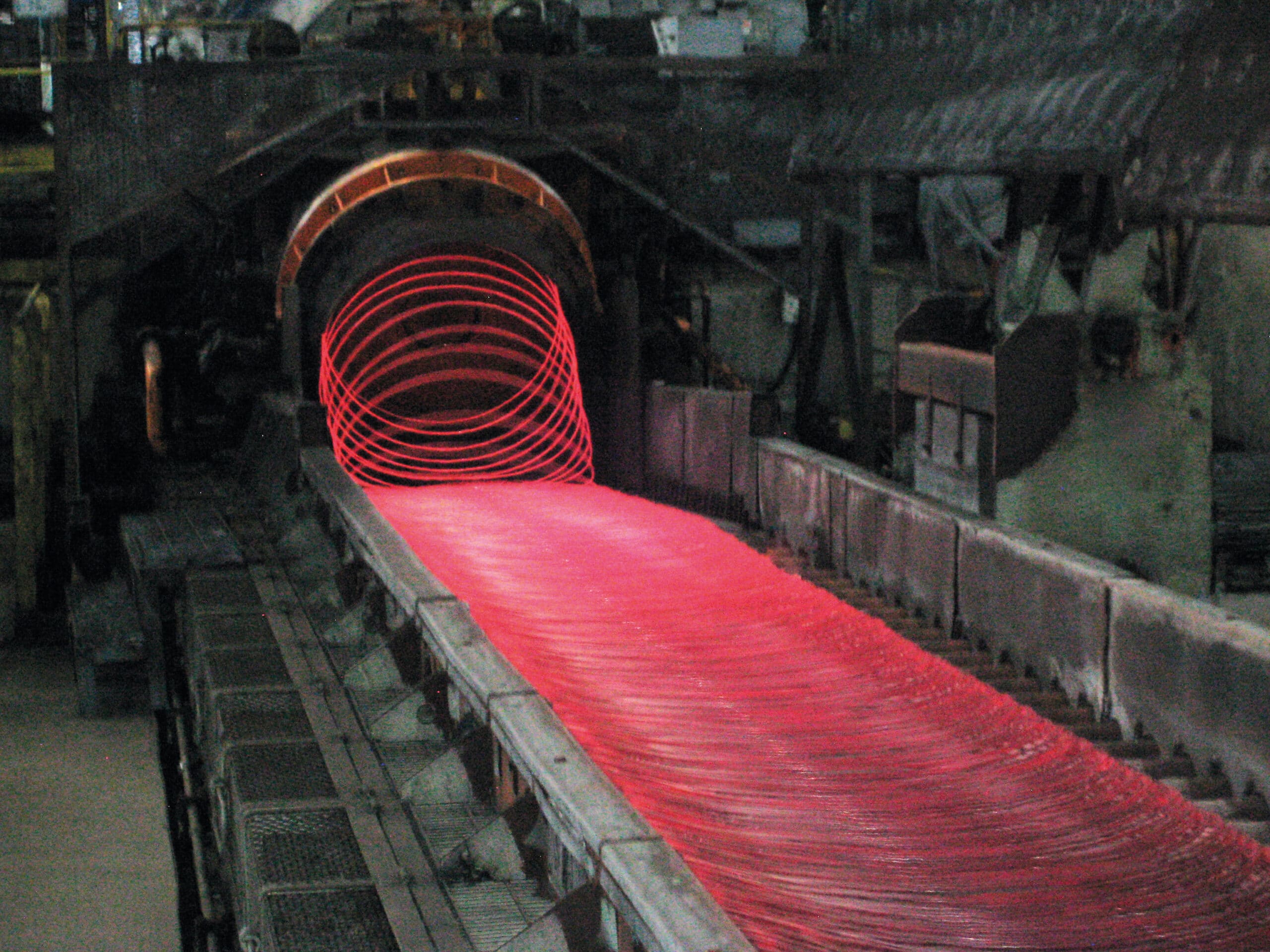
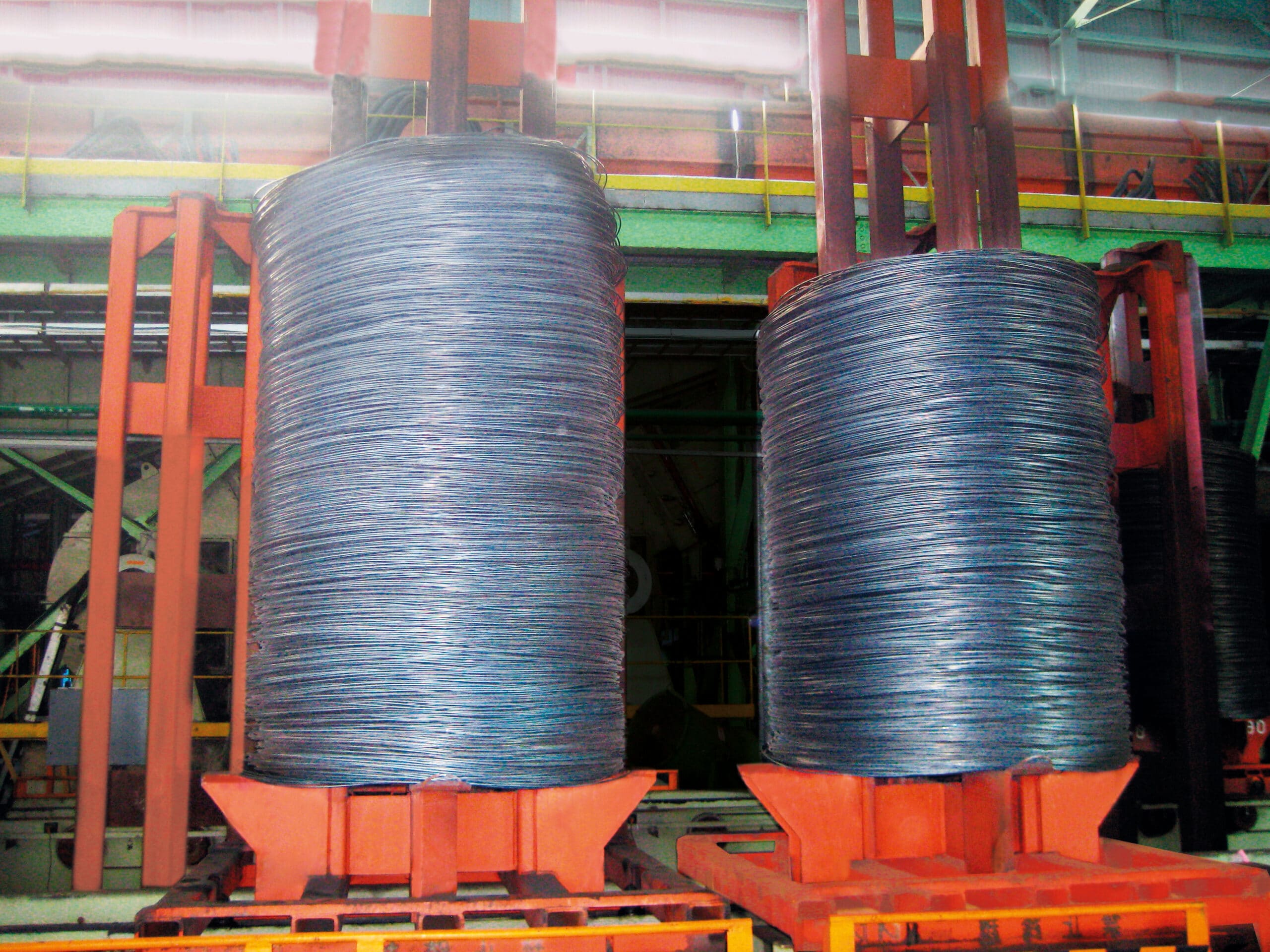
Transformational design
Primetals Technologies developed a number of improvements to the laying head system, including new pipe support, a modified pipe path and a revolutionary pipe design. The new laying head technology incorporates several patented innovations, with the greatest changes along the pipe path (Figure 1). In the SR Series pipe, new material replaces worn sections of laying head pipe through a controlled “self-regenerating” process during rolling. The regeneration shifts the wear zone up to 150 mm without affecting the laying head dynamic balance. This shifting of the wear zone results in a dramatic improvement in pipe life, which can be further enhanced with proprietary pipe materials.
Initially used in production at four facilities – two in North America and two in Asia – the new SR Series technology has delivered record-breaking results (Figure 2). At Sterling Steel, the rolling mill ran 130,000 tons, mostly on 5.5 mm rod, through an SR Series pipe. In addition, the improved consistency of ring pattern (Figure 3) resulted in fewer delays at the reform station, leading to new production records. Unplanned downtime for pipe changes went from almost 2,500 minutes a year to less than 100 minutes. Three other test sites reported similarly dramatic results. The improved pattern from the SR Series pipe has been able to produce a coil with height reduced by approximately 15% to 20% – an important factor for compacted coil integrity, coil storage and shipping (Figure 4).
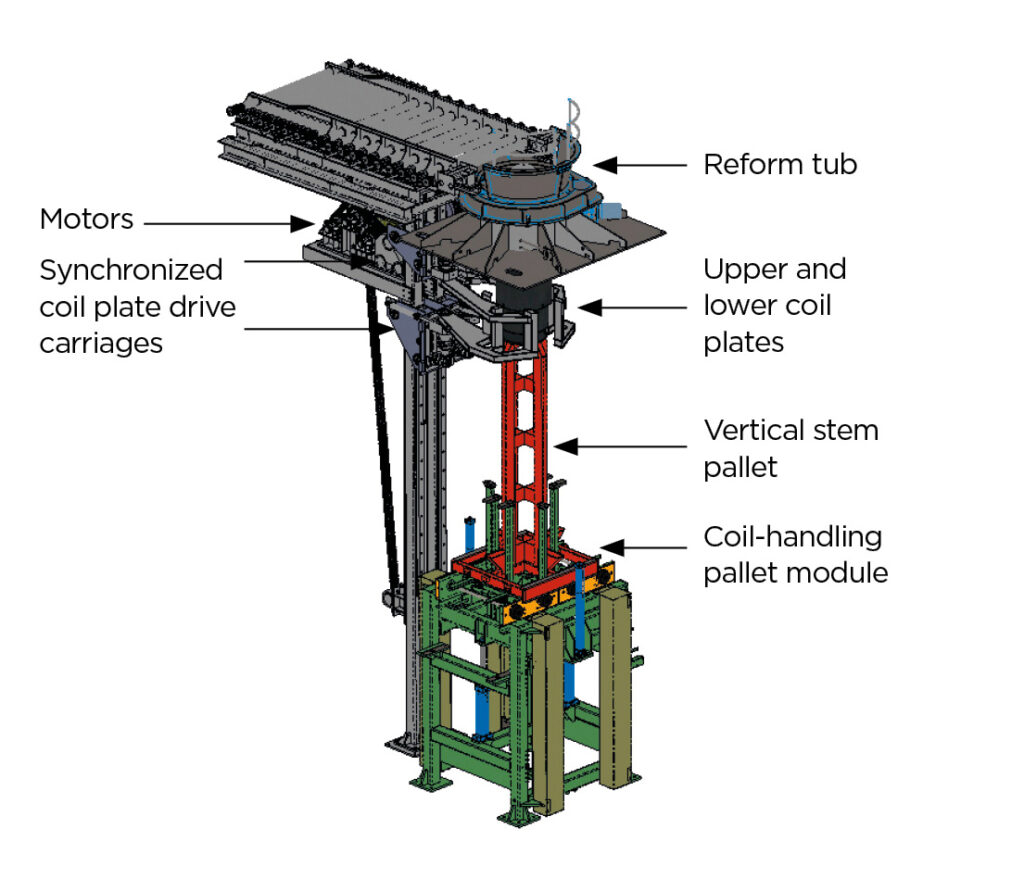
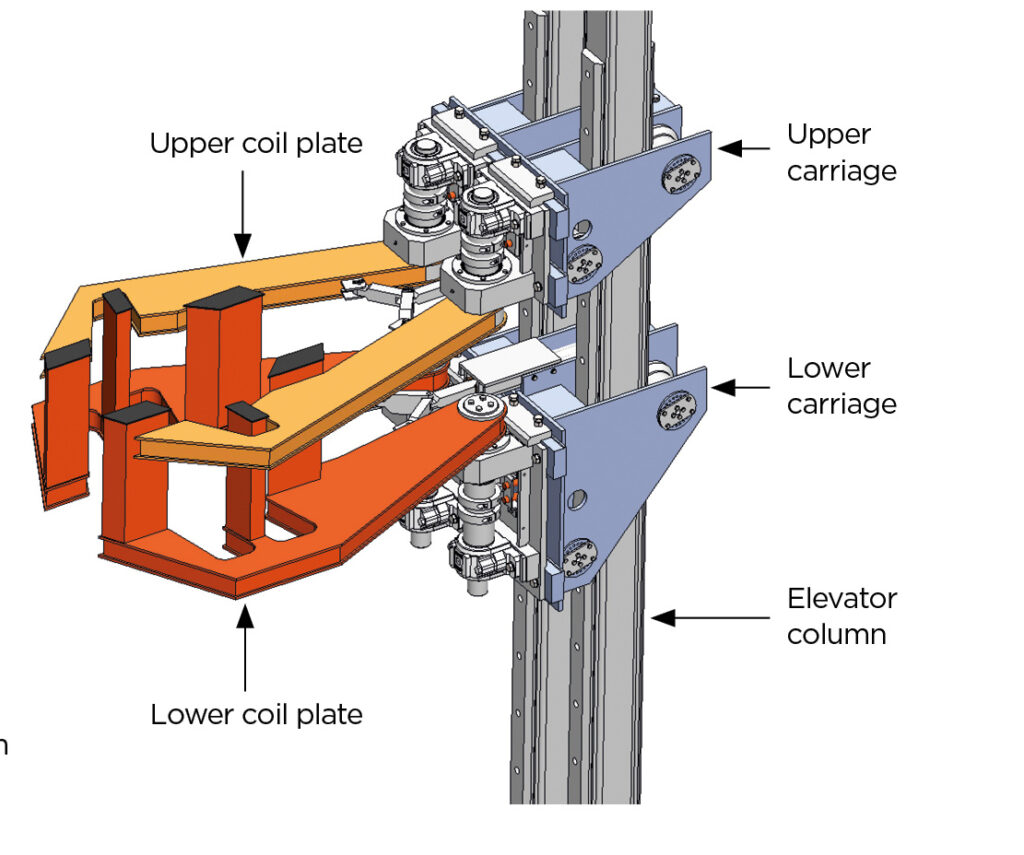
Refinement to conventional reforming technology
Experience with many installations in mills around the world over the past 20 years has proven that the ring distributor forms the best-quality coils available in the industry today. However, older reform tubs and coil plate designs can form uneven or stepped coils as a result of drops within the system. Poorly formed coils are more likely to tangle during unspooling and can be difficult to pack for shipping due to the uneven shape, which can result in damage to protruding rings.
A new patented reform design eliminates all coil drops. The stepless reform tub is a complete system with two coil elevators on a shared column arrangement (Figure 5). Rings fall from the exit end of the cooling conveyor into the reform tub, are caught by an upper coil plate, and descend at a controlled rate. When the upper coil plate reaches the end of its travel limit, it nests into the lower coil plate. This interlocking design allows the upper coil plate to transfer the coil to the lower coil plate without any drop or step (Figure 6). After the handoff, the upper coil plate opens to allow the upper carriage to reset in anticipation of the next coil. When the coil is complete, the lower carriage accelerates to the base of the stem where the lower coil plate transfers the coil to the vertical stem or the two-armed mandrel. This system protects both human operators and critical components. Interlock gates prevent workers from entering these areas while the system is running.
Improved production, quality and equipment lifespan
Technology developed for new laying heads responds to problems at many wire rod mills associated with limited mill speeds, low production rates and poor quality. Furthermore, upgrades dramatically extend pipe life through a patented self-regeneration process. As a result, wire rod mill operations have been able to improve production rates and achieve higher speeds with fewer pipe changes. The pattern and coil height of coil packages is greatly improved, with consistently high-quality rod meeting market demand.
The stepless reform tub system complements the laying head improvements by seamlessly transferring the well-formed rings from the conveyor, through the ring distributor to the coil plates. The results are a greatly improved coil package, and thus a more desirable final product for the downstream customer and less downtime for the mill.
